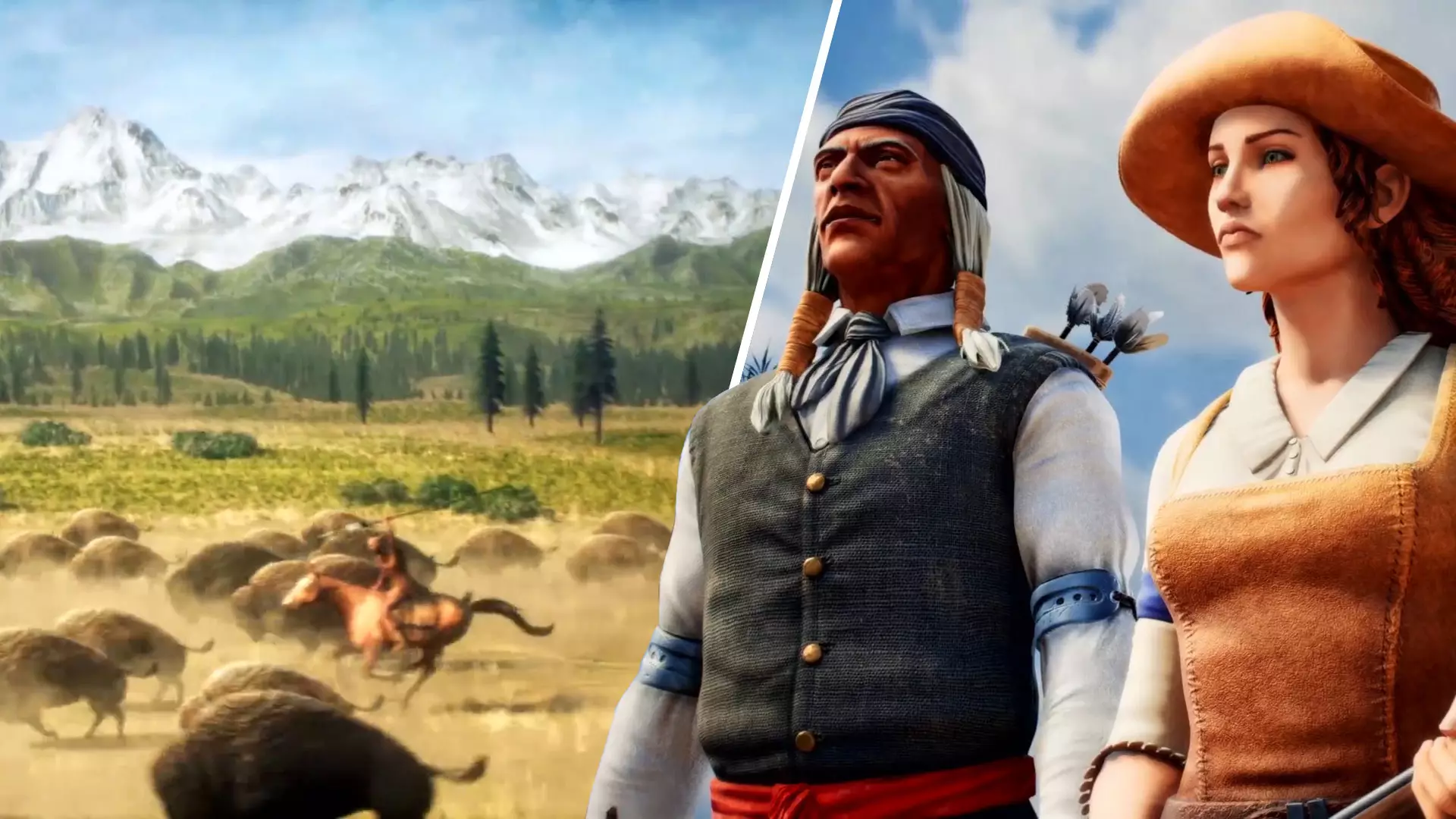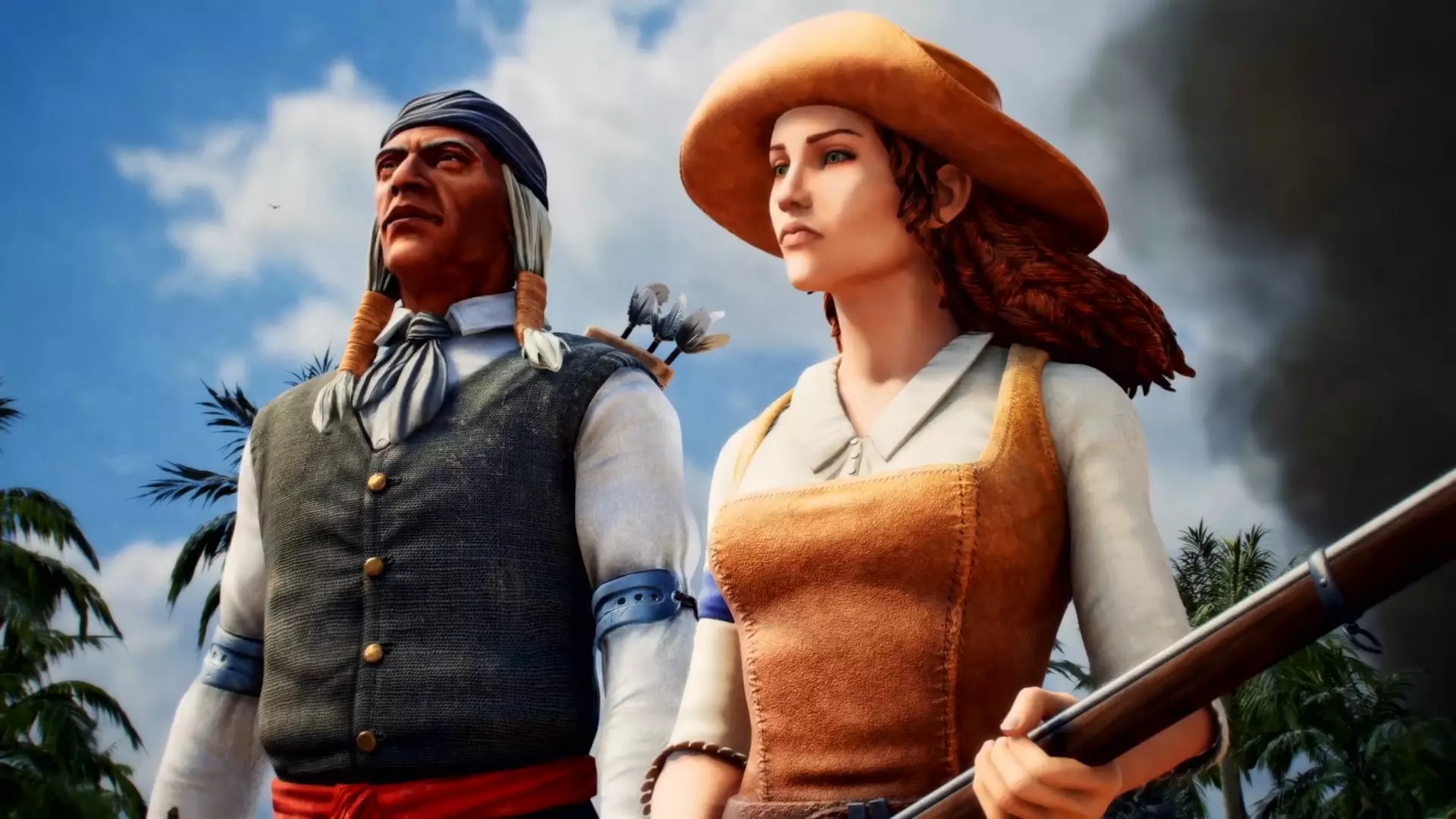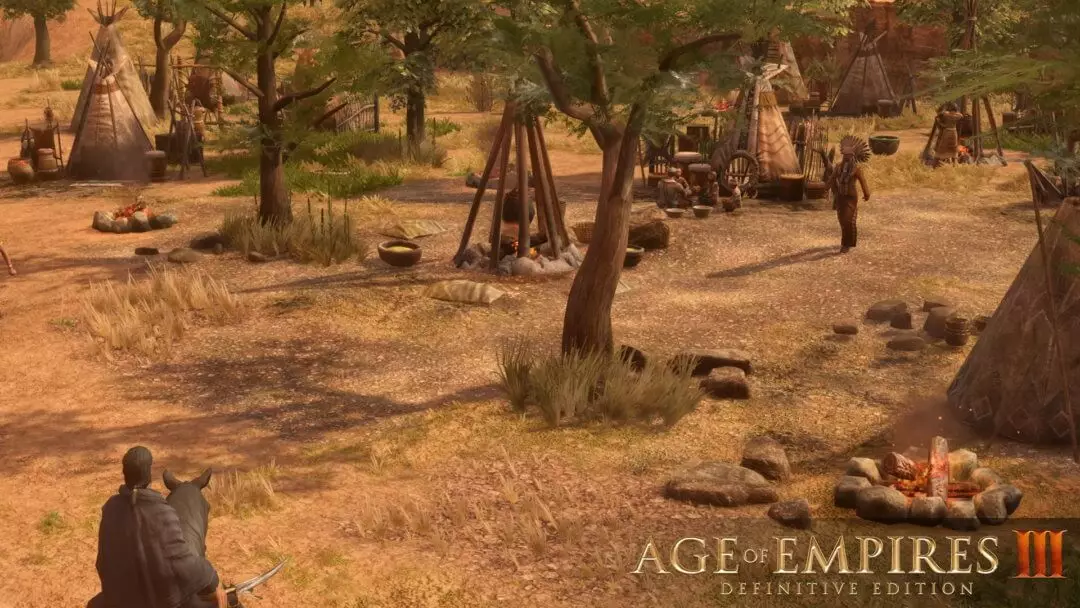
Fire pits, skulls on spikes, and special powers that allowed players to commune with animals are just a few of the problems with the depiction of Native Americans in Age of Empires 3. That's according to one of the tribal consultants who has been working to get the game's Definitive Edition right.
In a fascinating interview posted on developer World's Edge's site, tribal consultant Anthony Brave breaks down the problems with the original representation of Native Americans and some of the changes the team has made. They're surprisingly far-reaching, suggesting World's Edge are taking this seriously. They highlighted the changes in the game's announcement post, saying "a key focus of our work at World's Edge is to authentically represent the cultures and peoples that we depict in our games. While developing Age of Empires 3: Definitive Edition, we realised that we weren't upholding that value as well as we could regarding our Native American cultures; so we set out to fix that: working directly with tribal consultants to respectfully and accurately capture the uniqueness of their peoples, history, and cultures".
One of the major problems Brave highlights was the original game's fire pits. They were a building where you could send your villagers to dance, something that would give your warriors a buff in battle.
"Although I don't think the original creators intended it this way, the Fire Pit was pretty offensive for a number of reasons," Brave says. "It hit me as soon as I saw it, and immediately brought to my mind these old stereotypes of Natives dancing around the fire like wild savages. Upon contact, Native people weren't considered human by their western counterparts-but as wild animals without souls. If anything was wild, however, it was the imagination of colonists; we all had robust societies, cultures, governing structures, languages, histories, etc., and certainly weren't wild or savage.
"The Fire Pit works magically in that having people dance around a fire somehow gives warriors on the battlefield more power. On the other hand, the Western people get power through logical means: like the development of technology or increasing their capacity for war by developing their forts. This perpetuates the old, tired "savage vs civilised" dichotomy."

It was important to change the pit then because, as Brave says, "Having something like the Fire Pit be so central to the game's play continues to reinforce these rather pernicious notions about us. With its presence, it subtly says, 'it's okay to utilise these kinds of images of Native people.' Unless we change these kinds of representations-big or small-in a way, we will all be stuck dancing around a Fire Pit."
In the Definitive Edition, the Fire Pit has been replaced with a Community Plaza. There villagers work to research and make things that buffs your faction.
Another big change is mining. In Age of Empires 3, every civilisation uses mines to get certain resources but, as Brave points out, mining is something that goes against Native American values. "We are taught to respect the land as our mother and be in good relations with it," Brave says. "Mining is a form of exploitation of the land, and we would never treat our mother like that."
Instead of mining, the Native American factions now have a Tribal Marketplace where they gather coin.
Another common problem with the depiction of Native American tribes in media is their relationship with animals. Creators have often taken respect for the land to an extreme where tribes people have a supernatural connection to animals. This is present in Age of Empires 3 with the 'Nature Friendship' ability. "This trope seems particularly prevalent in video games to the point where it seems like if there is a Native character in a video game, that character must have animal powers," Brave says. "When it gets that entrenched, it would be good to stop the dancing around that pit as well."

The 'Nature Friendship' ability has been changed and other abilities have been added to change the supernatural implication of the original.
Another significant change over the original campaign is that Crazy Horse, one of the Lakota tribes' war leaders who fought back against colonists, will no longer feature in the game. "He seemed to be appropriated just to spice up a 'Native' storyline," Brave explains. "Crazy Horse being this great Lakota leader was a hero of mine growing up-as closely as I can say I had any heroes-and his role in the original Shadow storyline trivialises who he really was."
Brave doesn't think there's no place in a game for Crazy Horse, but "it has to be done right". He goes on to say "with great care, thought, and research from the beginning...not just in how he is represented, but also with the kind of context the game creates. In this case, it just didn't seem very dignifying for someone of his standing. I would also add that if you wanted to depict Crazy Horse, you should reach out to his maternal family to get permission."

Brave has rewritten the story of the Native American campaign, creating a new character to replace Crazy Horse. He's also made Chayton, the protagonist of the missions, a much less naive character. He now knows more of the culture and history of the people he's fighting for.
It sounds like World's Edge is really taking the issue of representation seriously and it could be setting a high bar for other developers returning to old games to update them for new players. Fancy graphics and updated controls are one thing, but recognising shortcomings of a game and taking the opportunity to improve on them is a good move.
Featured Image Credit: World's Edge